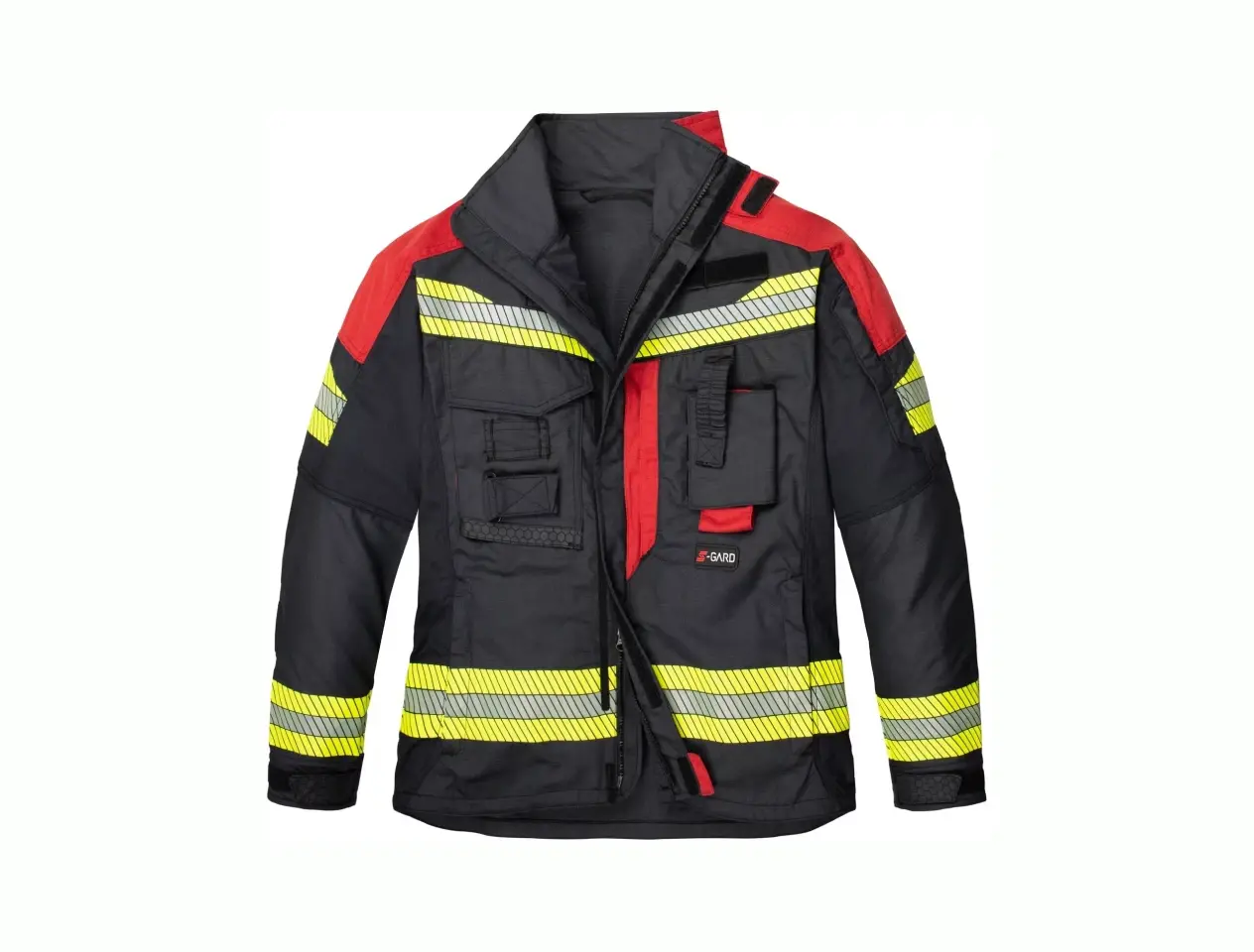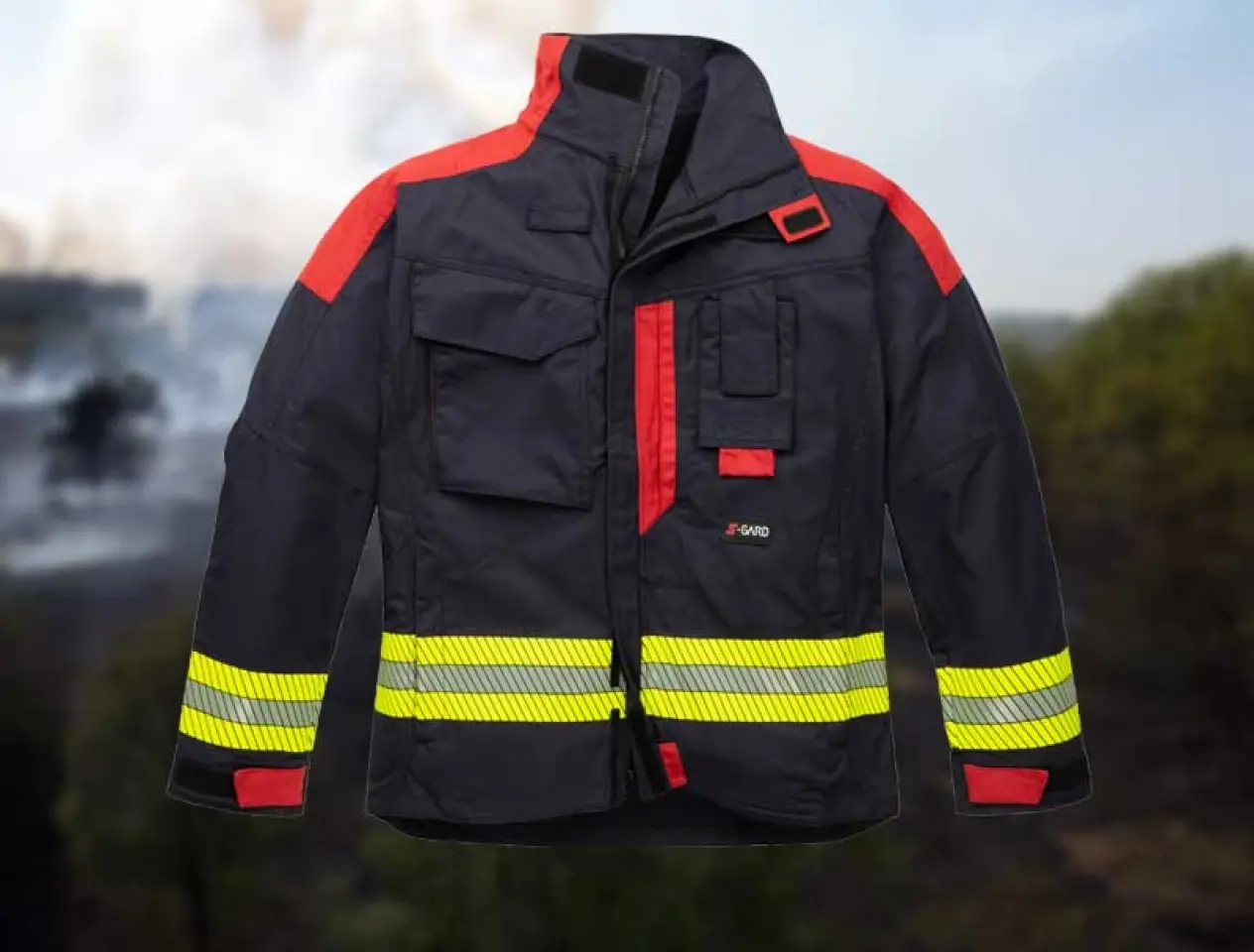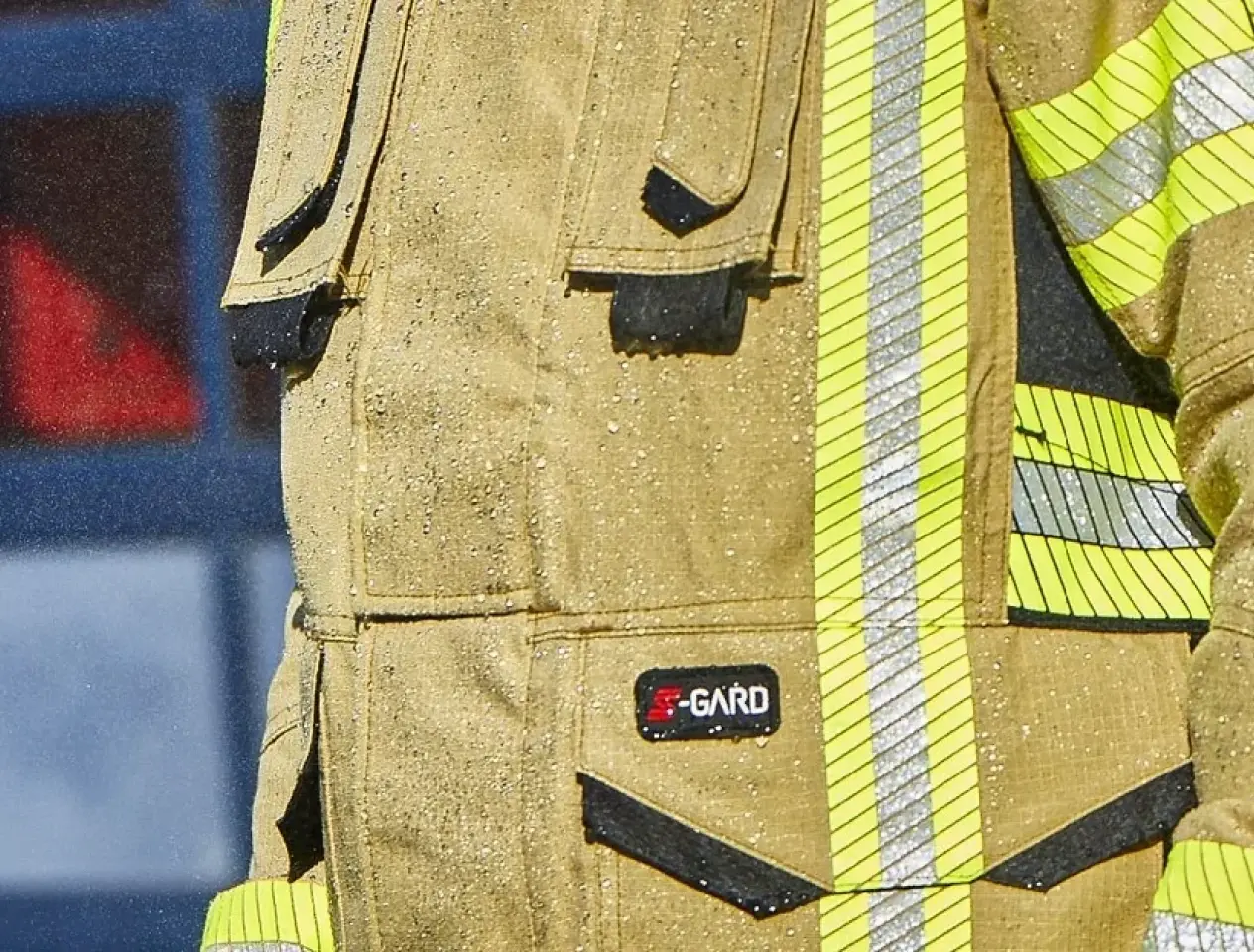Our RANGER 2.0 – Reduced fabric layers and lighter clothing

Reduced fabric layers and lighter clothing
We have already presented the Ranger 2.0 special firefighting suit at Florian 2019. In addition to excellent protective functions and a modern design, the combination is characterised by outstanding mobility and breathability. A special coating also ensures very high abrasion resistance and eliminates the need for material padding in the stress zones. This makes the garment lighter and more comfortable. The protective suit was developed for use in forest and wildland fires. However, due to its high level of comfort, it is also used as station clothing.
We have not skimped on cut and equipment details in this combination either. These are designed to ensure that firefighters are perfectly protected during operations, that their freedom of movement is not restricted by the clothing and that they do not overheat. Here too, we have carried out intensive research and development and worked together with material manufacturers to ensure that our Ranger 2.0 offers the best possible protection in the field.
The Ranger 2.0 wildland jacket scores points with its modern design, high freedom of movement, functionality and wearing comfort.
The outer material is a combination of a highly heat-resistant and antistatic Nomex®/Kevlar® fabric and an elasticated Nomex® viscose special yarn with an elastane content. Numerous cut details improve freedom of movement and enable wide-ranging movements without the fabric stretching and restricting movement. These include gusset inserts in the underarm area of the jacket and in the gusset of the trousers, a stretch pleat between the shoulder base and sleeves and stretch zones made from elasticated Nomex material in the underarm area and crotch. The elbows, knees and collar are also ergonomically pre-shaped.
Instead of the usual material doubling, a special coating ensures extremely high abrasion resistance in the stress zones on the shoulders, elbows and knees. Breathable materials promote air and heat exchange, while underarm zips allow additional ventilation adapted to the respective situation.


